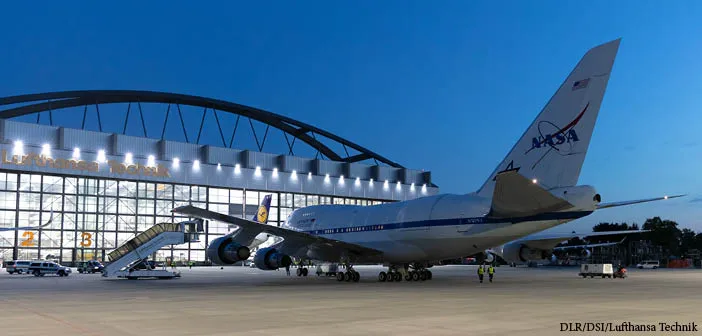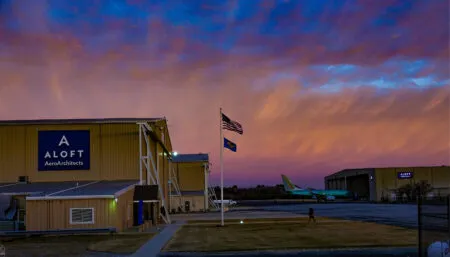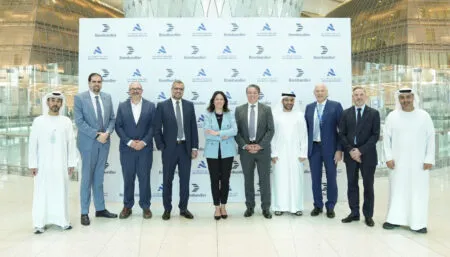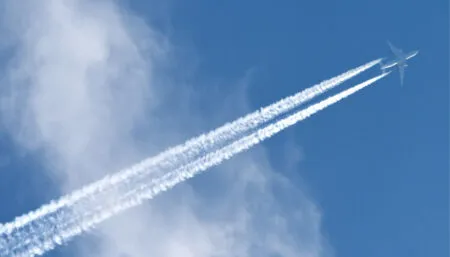Stratospheric Observatory for Infrared Astronomy (SOFIA), a modified Boeing 747SP used by NASA and the German Aerospace Center (DLR) as a ‘flying observatory’, has arrived in Hamburg, Germany, for a routine check at Lufthansa Technik. The layover is equivalent to a C-check, taking place approximately every three years.
“We are looking forward to the renewed cooperation with Lufthansa Technik,” said Heinz Hammes, SOFIA project manager at DLR’s Space Administration branch. “The special circumstances this year require cooperation and increased flexibility from all parties involved. We are convinced that we are in the right place for the tasks ahead.”
In the special case of SOFIA, the aircraft will be repaired in accordance with NASA regulations, which also defined the exact work packages for the layover. The work includes extensive inspections of the aircraft structure, ahead of any necessary repairs. The engines and cabin – including the panelling and floors – must be removed to enable test and maintenance work, including checks of all cabling and ducts.
In addition, the air-conditioning system is to be upgraded. “This will enable us to adjust the temperature in the cabin very finely in future,” explained Hammes. “This is particularly important in the instrument zone, because every research instrument requires a precisely fitting ambient temperature.”
The final checks at Lufthansa Technik – for instance on the engines and the cabin’s internal pressurisation – are scheduled for mid-December 2020. The maintenance work should be completed by the beginning of February 2021, when SOFIA is scheduled to resume its scientific operations.
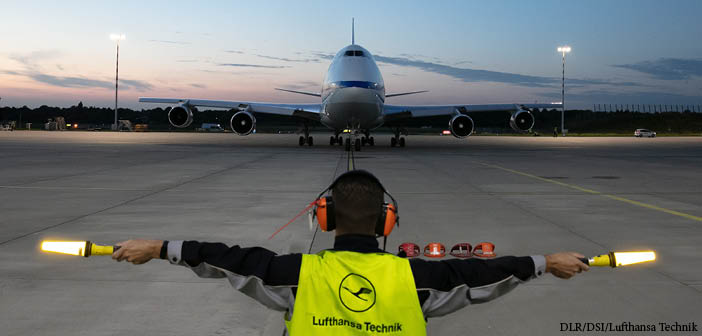
The onboard telescope – the German contribution and heart of the observatory – will be thoroughly overhauled during the aircraft’s stay at Lufthansa Technik. This work will be carried out exclusively by a team at the German SOFIA Institute (DSI) at the University of Stuttgart, which is very familiar with this unique system.
“With this extensive maintenance, we pay particular attention to those work packages that, due to their complexity, are only carried out every three or six years,” said Michael Hütwohl of DSI, who is responsible for the SOFIA telescope. “Moreover, a large number of smaller jobs – from the inspection of the 2.7m [8.86ft] primary mirror to software updates of the electronic telescope systems – are also on the agenda.”
More than 10,000 working hours are earmarked for the scheduled work alone, so the activities must be well coordinated. “In 2014 and 2017 we already experienced exceptionally good cooperation with our colleagues from DSI, DLR and NASA, and we are now looking forward to continuing this cooperation,” said Sven Hatje, the project manager at Lufthansa Technik responsible for SOFIA’s C-checks. “It is great that we can now welcome SOFIA back again.”
Unlike SOFIA’s other visits to Hamburg, this time its scientific instrument (German REceiver for Astronomy at Terahertz Frequencies, GREAT) is mounted on the telescope. It will be disassembled after landing and brought to the Max Planck Institute for Radio Astronomy in Bonn, Germany, for maintenance and optimisation.
All work on the aircraft is carried out under strict safety precautions due to the COVID-19 pandemic. Both Lufthansa Technik and NASA have developed and coordinated comprehensive procedures for working in and on the aircraft. These include the rule that no more than 15 people may be on board at the same time. The technicians are also obliged to wear mouth and nose protection during the entirety of the work, and only absolutely necessary personnel have access to the aircraft.
